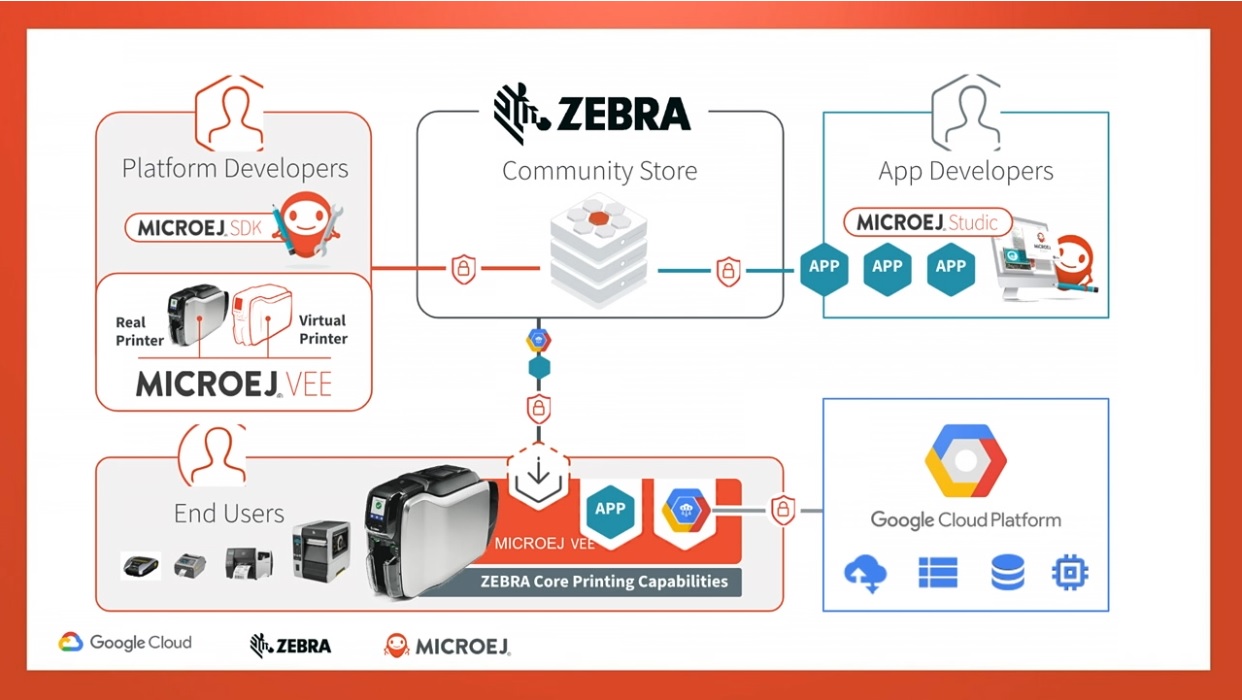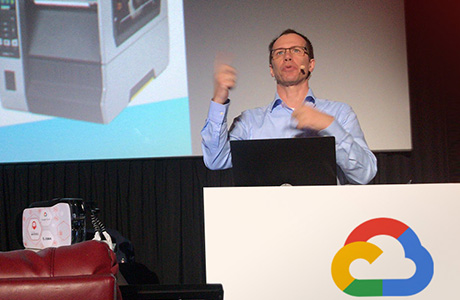Embedded microprocessors are in the heart of the diverse world of the internet of things, such as Home Appliances, Smart Watches, Printers, Medical Devices, Smart Meters, etc. Within these constrained devices (by design as well as by the cost), the real time component is critical. How do you get your device to easily and securely connect your IoT devices to Google Cloud IoT Core, while building applications that address the growing customization demands from your customers and partners?
Google Cloud IoT Core connectivity at scale
“When you think about IoT, the biggest technical challenges around the heterogeneous devices is that devices come in all sorts of shapes and colors, compute capability varies, memory capability varies, costs, form factor… The environments that these devices operating in are as well a lot. And connecting all of these [devices] seamlessly, reliably, to the cloud was a problem that has not been solved yet.” – Vidya Adala – IoT Edge Technology Partnerships – Google Cloud
The pace of change is accelerating. Hardware gets very diverse, and Cloud API’s change continuously as Cloud providers constantly offer new features while enhancing security requirements. Solving cloud connectivity on each and every kind of device can quickly become a barrier to faster productivity and growth.
MicroEJ’s partnership with Google IoT Cloud takes care of the “plumbing” between your device and Google Cloud Platform (GCP) for seamless IoT connectivity. That way, you never have to worry about updating or changing the firmware that comprises the foundation of your product.
Video Credit: © Gonin/Adobe Stock
IoT Devices Application Development
In order to accelerate your production and stay competitive, you need to cut through complexity and standardize your development process. The fastest way to answer all of your customers’ needs is to allow third parties to develop without having to build, test and deploy apps on all your devices through a Secure Virtual Environment.
During Google Next 2019, Zebra Technologies unveiled how its partnership with MicroEJ allowed them to open their printers to third-party developers while still controlling and securing the Zebra real time IP assets (see the conference and transcript here).
Here’s what Victor Salmons, Vice President, New Product Development at Zebra Specialty Printing Group said on the subject:
“Nowadays, things are moving so quickly. IoT is moving, use cases are changing. Imagine if we could have a way to go faster, and develop applications on top of that real time [printing engine] and keep them separated, keep them managed, so that we are delivering real time. Our partnership with MicroEJ allowed us to solve that problem.”
By using MicroEJ Virtual Execution Environment, you are able to design, test and deploy Java based applications the same way you would do on an Android smartphone.
MICROEJ VEE shares with Android the same virtualization technology (JVM), as both provide Virtual Devices, and both are application mindset technologies, although MICROEJ VEE is much smaller. Most people associate MICROEJ VEE as the “tiny” Android for Things.
As a result, once a program has been written (such as the Google agent), it is made available and downloadable on all embedded devices. As the plumbing is handled by MicroEJ and the Google IoT Core Cloud Platform, users can focus on their applications that play to their strengths and not the plumbing.

Improved IoT Security
Unlike phones or PCs that “may” fail from time to time, industrial electronics have to be reliable and protected against bugs, tricks or malicious code that can be brought by third party services.
MicroEJ provides various security checks to improve system reliability while protecting your hardware.
MICROEJ VEE is a Trusted Executing Environment that confines each software application into a sandbox that controls all of its interactions with the rest of the system (not only the code applications, but also the resources it has accessed).
The applications will also have its binary code formerly checked before it can run, to ensure that no unsafe code is ever executed by the VEE core engine to protect not only the software, but also the OS/RTOS basic services and core activity.
Lower Costs
Edge embedded devices are becoming available in multiple configurations at a low cost (with microcontrollers starting at just 1$), low power, and minimal management needs. This is resulting in a drastic reduction of the cost of IT, while creating opportunities for new types of applications that sit on the top of that edge.
Keeping the Bill-Of-Material (BOM) low is crucial for embedded devices: as more and more devices are launched onto the market; manufacturers get more pressure to lower their prices. Advances in industrial electronics means that manufacturers can (and should) take advantage of lower cost technologies.



